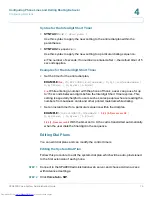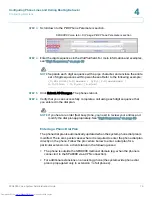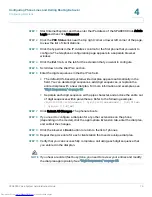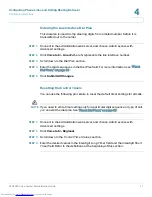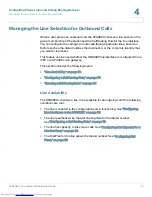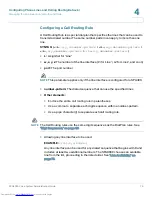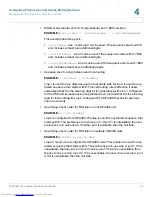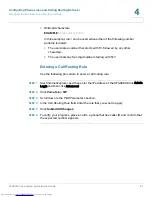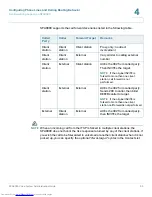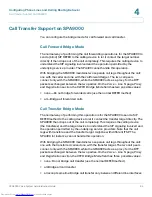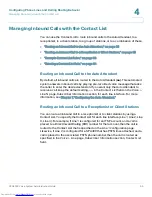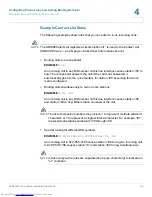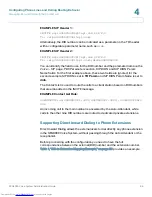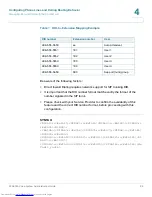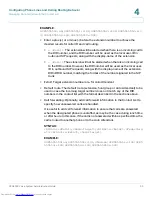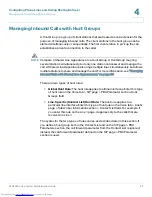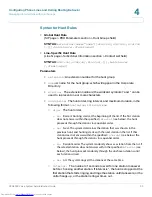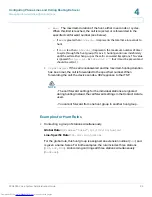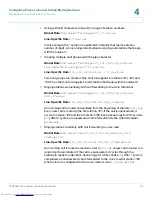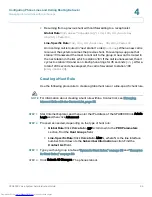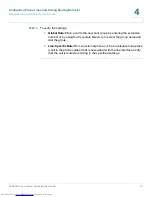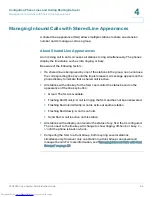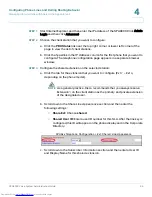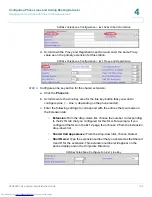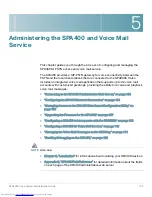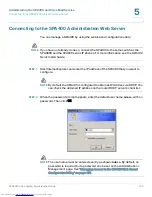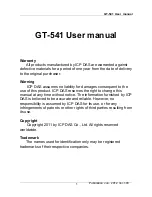
Configuring Phone Lines and Calling Routing Behavior
Managing Inbound Calls with the Contact List
SPA9000 Voice System Administration Guide
88
4
EXAMPLE SIP Header 1:
INVITE sip:[email protected] SIP/2.0
To: <sip:[email protected]>
Alternatively, the DID number can be indicated as a parameter in the TO header
with a configurable parameter name, such as
didn
.
EXAMPLE SIP Header 2:
INVITE sip:[email protected] SIP/2.0
To: <sip:[email protected]>;didn=4089993003
You can identify the field to use for the DID number and the parameter name on the
Voice > SIP
page,
PBX Parameters
section,
SIP DIDN
and
SIP DIDN Param
Name
fields. For the first example above, these two fields are ignored; for the
second example, SIP DIDN is set to
TO Param
and SIP DIDN Param Name is set to
didn
.
The Contact List is used to route the calls to a client station based on DID numbers
that are embedded in the INVITE message.
EXAMPLE Contact List Rule:
4089993000:aa|4089993001:3001|4089993002:3002|…|4089993009:3
009
An incoming call to the main number is answered by the Auto-Attendant, while
calls to the other nine DID numbers are routed to dedicated private extensions.
Supporting Direct Inward Dialing to Phone Extensions
Direct Inward Dialing allows the external users to dial directly any phone extension
in the SPA9000 Voice System, without passing through the Auto Attendant or the
receptionist.
Before proceeding with the configuration you need to have the full
correspondence between the external (DID) number and the extension number.
Table 1, “DID-to-Extension Mapping Example,” on page 89
provides an example.
Downloaded from
www.Manualslib.com
manuals search engine

